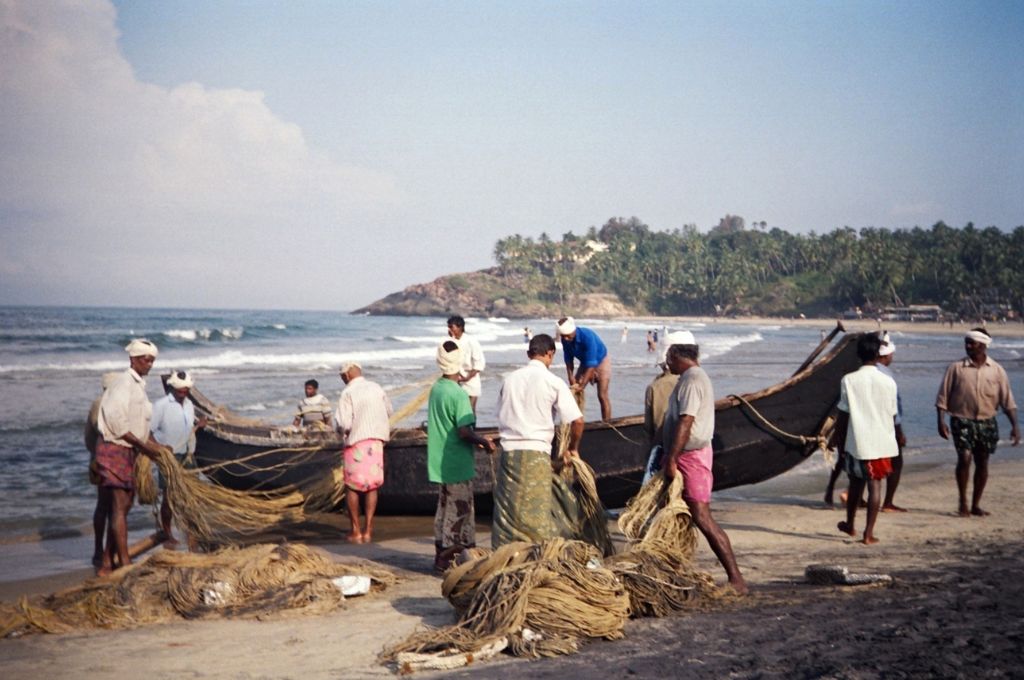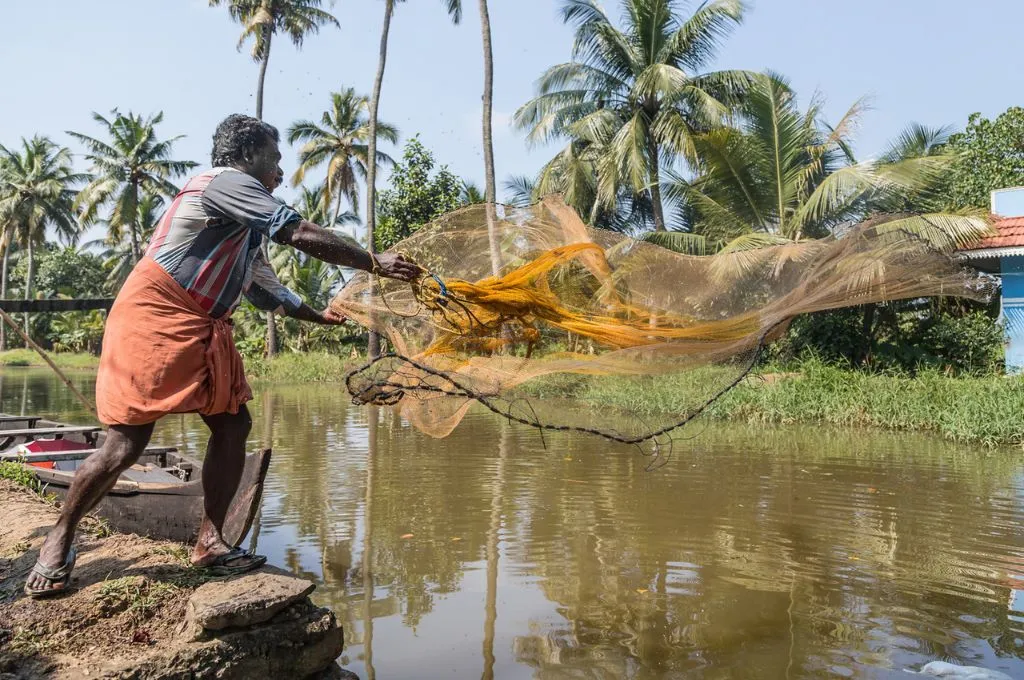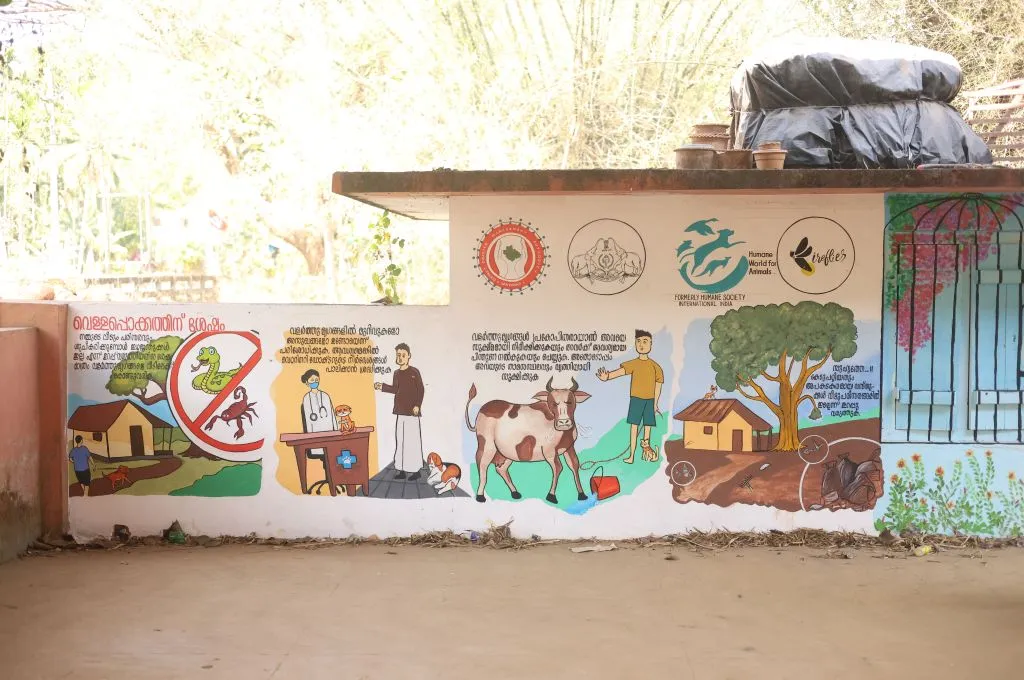Sandy shores, sand dunes, mangroves, mudflats, cliffs, seagrass meadows, salt marshes – these scenic features often make news as they face frequent threats. Marine litter, extreme weather and building activities damage and degrade them. Worldwide, scientists, planners, and local communities are concerned. These diverse features, called coastal commons, foster a variety of life forms and their interactions amongst themselves and with the coasts and coastal waters, thereby promoting the livelihoods of fishers, divers, farmers and all those who live and work on the coast, their places and cultures.
India has a diverse coastline stretching over approximately 7,500 km, encompassing 75 fishing zones. The marine fisheries sector, sustaining the livelihoods of around four million people, plays a pivotal role in this coastal landscape.
What are coastal commons?
Coasts are the interfaces between the land and the sea. They involve close and complex interactions and outcomes between social and ecological subsystems, involving plant-animal-environmental relationships.

Coastal commons comprise diverse, interacting resource systems – mangroves, water, pastures, beaches, estuaries, reefs and fish. They may include sandy shores, placid backwaters, laterite cliffs, granite rocks, mangroves, mudflats, sand dunes and pebble bays.
These spaces serve important economic, ecological, social, cultural and
recreational functions in coastal and fishing communities. They are used for fishing activities such as fish landing, fish drying, docking, parking boats but also for recreation, relaxation, religious celebrations and cultural expressions.
Social scientists often include people living on the coasts within the scope of commons, along with their relationship with local natural resources and the rules they come up with. In that sense, commons include the local community, the values and norms of those who practise commons, the “commoners.”

How do local communities use coastal commons?
In traditional fishing villages of south India, people often live right on the coast, park their boats and keep their gear right on the shores. “Others such as the Waghers in Gujarat and West Bengal’s Sagar Islanders maintain permanent residences inland and alternate occupations as cultivators and daily-wage labourers. During the fishing season, these communities relocate their entire households, livestock and all, to temporary shore-side settlements and devote their labours primarily to fishing,” notes a booklet published by Dakshin Foundation, a Bengaluru-based conservation group.
The men of the community often launch and land rafts, canoes and small boats from these shores. They operate shore seine units that engage 20-50 fishers, including elderly fishermen and those who are unable to join a boat’s crew. The shores are used as boat yards and people make and mend nets and lines there. Women dry, smoke and salt fish here.

Fishers often use cliffs and rocks as high points to get a clear view of the sea and the sky around to assess the weather conditions. They also serve as way markers clearly visible offshore. Granite rocks such as the ones on the shores of Kovalam and the laterite ones near Varkala in Thiruvananthapuram act as rich habitats of mussels, bivalves and crustaceans such as lobsters supporting livelihoods of free divers and shoreline fishers.
In the unique, brackish waters of estuaries, fishes breed, plants and animals thrive, mudflats housing oysters and clams. These places are natural harbours where fishers can safely dock or park on the banks of the rivers and lagoons.
What are some of the ecological benefits of coastal commons?
Coasts support bursts of biodiversity or a variety of life forms. “Diverse fauna such as lizards, snakes, beetles, mice, hares, foxes and antelope such as the blackbuck thrive in coastal sand dunes, while bivalve, octopi and crustaceans are plentiful in rocky shores,” Dakshin Foundation marine biologists note.
Mangroves, coral reefs, seaweed forests, mudflats, salt marshes and seagrass meadows and green belts of forests or plantations protect the coasts from waves, surges, high tides, tsunamis, sea level rise, and subsequent flooding and erosion. During the 2004 Asian tsunami, mangroves famously saved many lives across South and Southeast Asia.
Coastal wetlands are carbon sinks that absorb excess carbon dioxide from the atmosphere. They accumulate 15 to 50 times more carbon per unit area than forests on land. Therefore, they are considered immensely valuable nature-based solutions to global warming.
How are coastal commons governed?
Community ownership and control of local resources for the “common good” is the norm promoted by the Indian Constitution. The Forest Rights Act 2006 also protects community rights over commons. The Environmental Impact Assessment Notification 2006 provides opportunities for community participation in decision-making for development projects. The Coastal Regulation Zone Notification 2011 defines coastal conservation and governance frameworks.
Communities often use these laws and international norms to protect the commons. There are also traditional ways that coastal commons are managed and conserved.
In South India and elsewhere, fishers deploy creative and equitable resource-sharing practices to use coastal commons. The ooru panchayats (village councils) in Tamil Nadu and Dheevara karayogam, Jamaats and Christian parish committees of Kerala are some of the socio-religious bodies that regulate the use of commons amongst fishers. In Kerala, a system called padu defines rights over fish stock and boundaries of fishing grounds.
The dynamic nature of coastal commons makes governance challenging.
However, the area of the commons keeps shifting. Unlike the built, solid, stable urban spaces, marine and coastal areas are fluid, moving masses that change size, shape and texture continually. For instance, a sandy shore may lose parts during the monsoon season when the waves carve out its parts. After the rains when the wind, currents and wave movements shift, they may transport back the sediment taken away and build back the beach. A paper published in the International Journal of the Commons in January 2024 underlines the dynamic character of the coastal areas by saying, “Water use and control in one place may have significant repercussions elsewhere. For example, currents and tides transport nutrients, pollution, salt, sediments and other substances, having ecological consequences over a wide area and affecting and often dispossessing other potential and existing uses.”
“The dynamic nature of coastal commons makes governance challenging,” says Nandakumar D., Professor of Geography (adjunct) at Sree Sankaracharya University of Sanskrit, Kalady, Kerala. “Mapping, territoriality, fluidity of the sea-land relations — all these can be complex. This complexity can make claims for space difficult,” Nandakumar says, based on his experience in community mapping of Coastal Regulation Zone violations.
What are the pressures on coastal commons?
Rights over coastal commons are often contested. Complex and simultaneous challenges due to the over-capacity of the fishing fleet, over-fishing, climate change, marine pollution and coastline erosion due to infrastructure development projects make them increasingly vulnerable. This trend is pronounced on the southwestern Indian coast, one of the densest habitats of artisanal fishers. Fishers are often driven out of these places for roads, ports, disaster risk reduction measures and tourism, as news reports show.
Coastal ecosystems are fragile, complex, and often poorly understood.
“In particular, the discourses of ‘blue economy’ and ‘blue growth’ have become powerful buzzwords,” writes Synn Movik of the Norwegian University of Life Sciences in a recent research article on contested coastal commons. A blue economy involves sustainable development defined differently and involves diverse activities such as fishing and aquaculture, shipping, mining, renewable energy, and marine biotechnology. Currently estimated at $1.5 trillion per year globally, the blue economy is set to double by 2030.
“There is a lack of consensus on what the ‘blue economy’ encompasses as there are multiple perspectives, including viewing oceans as ‘natural capital,’ as ‘good business,’ but also as important for ‘small-scale fisher livelihoods,’” Movik points out.
“Moreover, coastal ecosystems are fragile, complex, and often poorly understood. The pressures on them are increasing, not only from climate change but also from economic development interests, causing,” Movik and colleagues noted in a study published last year, on Mumbai’s Koli fishers. They critique the city planners’ age-old practice of reclaiming the sea and turning it into profitable real estate. Such acts threaten to undermine the city’s ecological integrity and its coastal communities, the authors caution.
A recent study that reviewed a major port project in Vizhinjam village of Thiruvananthapuram documented details of the local coastal commons – rocky reefs and rich and diverse fish stock threatened by the venture. For centuries, the local fishers exercised shared rights and responsibilities here. The report noted that there are clear norms about when, where, and under what conditions different user groups can fish in the local waters. The study team called the coastal commons “lifelines of our coexistence with nature” and urged to “cherish and protect” these treasures.
Dakshin Foundation scientists caution, “Restricted and altered access to coastal commons creates widespread livelihood loss and displacement among fisher communities that also adds to the burden of poverty in urban areas where these groups migrate in search of alternative opportunities.”
Movik calls attention to spatial dimensions of social struggles for rights and access in marine and coastal areas, or the ‘blue commons’. Such systems question the notion that resource users selfishly overuse commons. While some policies and practices lead to resource destruction, some resource users invest time and energy to sustain environmental resources, as political thinker Elinor Ostrom argued.
This article was originally published on Mongabay.




